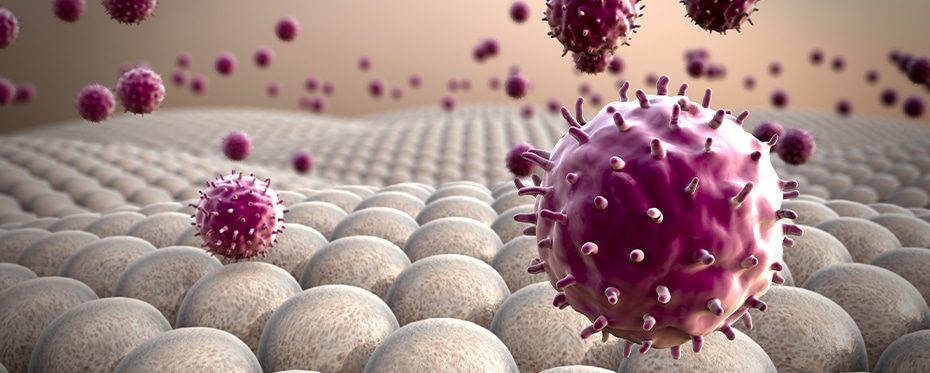Tag: Apoptosis
The cataract epidemic

Cataracts are caused by lifetime exposure to solar radiation affecting the eye lens and compromising visual ability and everyday activities. It can be treated with surgery; however, due to the increasing number of cataract cases, it is becoming a serious burden in healthcare systems worldwide. Dr Konstantin Galichanin at Uppsala University, Sweden has been studying how ultraviolet radiation leads to […]
How oxidative stress contributes to neurodegenerative diseases

The human brain relies on a constant energy supply that when compromised, neurodegenerative disease ensues, initially disrupting nerve cell communication followed by nerve cell death. Paul Hyslop and Michael Chaney investigate fundamental mechanisms driving neurodegenerative disease, to identify therapeutic interventions. They focus on how an enzyme integral to energy supply to nerve cells, glyceraldehyde-3-phosphate dehydrogenase (GAPDH) – is inhibited and […]
Read More… from How oxidative stress contributes to neurodegenerative diseases
One cell’s death is a microbe’s DINNR: How intestinal bacteria use our dying cells as fuel

Until now, a great deal has remained unknown about the relationship between programmed cell death and bacterial infections. However, recent work by Dr CJ Anderson and Professor Kodi Ravichandran from VIB-UGent, Belgium, has shed new light on this topic and introduced a new layer to the complex host–pathogen interaction. The team has shown that dying mammalian cells produce and shed […]
Cyclic self-reproducing systems: The key to health and happiness

Professor Leonid E Popov from the Tomsk State University of Architecture and Civil Engineering, together with his collaborator and editor Professor Valentin L Popov from the Technische Universität Berlin, explores the cyclic nature of self-reproducing systems. Summarising the main physiological findings on adaptation reactions, Professor Leonid Popov describes how actions that are effective in the sense of people’s productive activity […]
Read More… from Cyclic self-reproducing systems: The key to health and happiness
Deeper insights into cell death and survival

The intricate balance between cell death and survival is essential for normal development and for preventing diseases such as cancer and autoimmunity. Ronald Jemmerson at the University of Minnesota contributed to the seminal discovery that cytochrome c (Cyt c) plays a key role in the onset of apoptosis (programmed cell death). His laboratory also established that leucine-rich alpha-2-glycoprotein-1 (LRG1) binds […]
Read More… from Deeper insights into cell death and survival
Cell culture protocols for growing human keratinocytes in the laboratory

Dr Hitomi Fujisaki, Senior Research Scientist at Nippi Research Institute of Biomatrix in Japan, studies human epidermal keratinocytes (skin cells) and cancer cells using two- and three-dimensional type I collagen substrates. Through her research, she aims to understand more about the ways in which these cells interact with the substrate that they are grown on, and how this relationship can […]
Read More… from Cell culture protocols for growing human keratinocytes in the laboratory
Uncovering critical cell death mechanisms for novel cardioprotective therapies

Cell death is part of a natural process by which old cells are replaced by new, but it can also result from disease or injury. There are still many aspects of this process which are not fully understood. The laboratory of Dr Jason Karch, Baylor College of Medicine, aims to increase comprehension of the mechanisms behind cell death. If these […]
Read More… from Uncovering critical cell death mechanisms for novel cardioprotective therapies
Transtympanic injections to prevent hearing loss caused by cisplatin

Dr Sofia Waissbluth from The Pontificia Universidad Católica de Chile is specialised in otolaryngology (conditions of the head and neck). She has reviewed clinical trials that use transtympanic injections to prevent hearing loss caused by the chemotherapeutic agent cisplatin. To date there is no ‘one-shot’ solution to protect or cure patients from hearing loss. However, combinational therapy using transtympanic injections […]
Read More… from Transtympanic injections to prevent hearing loss caused by cisplatin
Infectious bronchitis virus affects energy production

Professor Tereza Cristina Cardoso, São Paulo State University, is a qualified veterinarian and her research explores infectious diseases in animals. Her latest work investigates how infectious bronchitis virus affects energy production by macrophage cells. Her research demonstrates that this occurs through disruption of mitochondrial respiration processes, which may have implications for how virus infections in poultry are prevented and treated. […]
Read More… from Infectious bronchitis virus affects energy production
Stentor coeruleus: Do these tiny cells have out-of-body experiences?

Occasionally, a person who recovers from a medical crisis reports an “out-of-body experience”. In unique research, Dr Benjamin Scherlag of the University of Oklahoma, Oklahoma City, USA, is using a single-celled organism called Stentor coeruleus to re-create the events that occur during an out-of-body experience. Dr Scherlag has shown that these cells can be revived from an apparently dead state […]
Read More… from Stentor coeruleus: Do these tiny cells have out-of-body experiences?